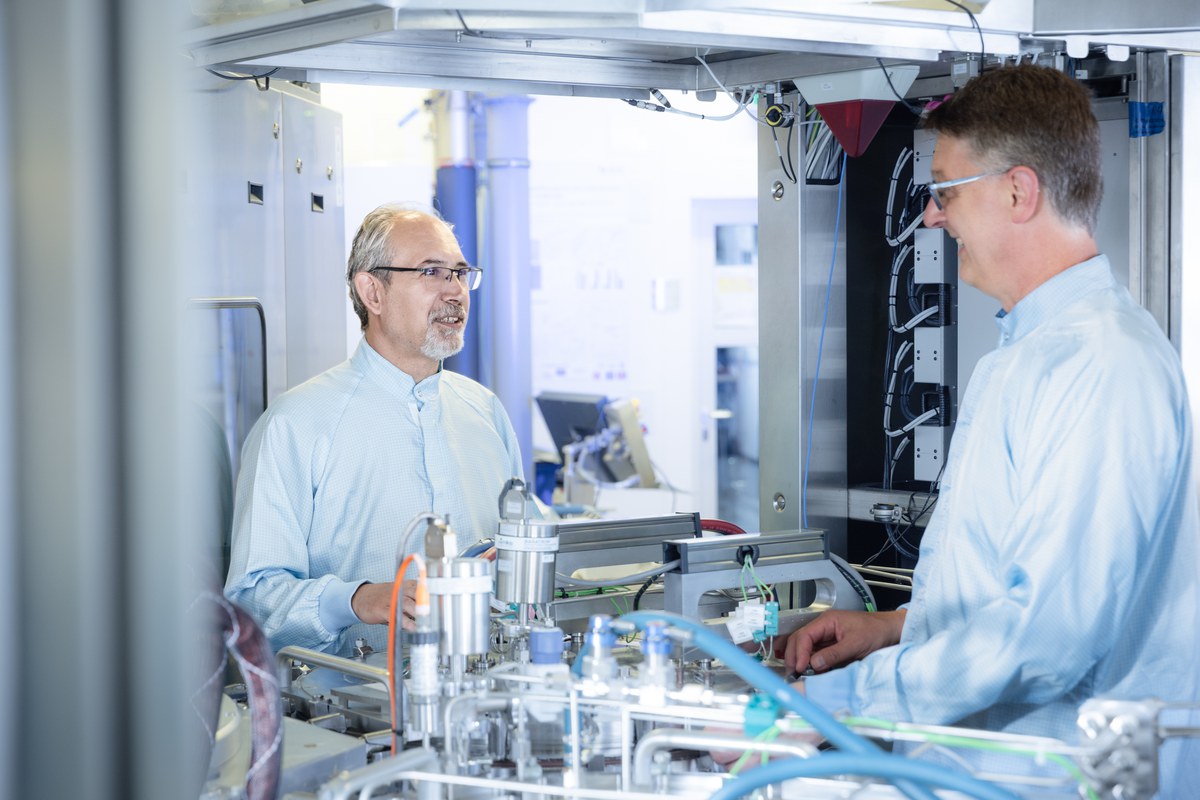15 July 2025
Researchers at Forschungszentrum Jülich and the Leibniz Institute for Innovative Microelectronics (IHP) have developed a material that has never existed before: a stable alloy of carbon, silicon, germanium, and tin. The new compound, abbreviated as CSiGeSn, opens up exciting possibilities for applications at the interface of electronics, photonics, and quantum technology.
What makes this material special is that all four elements, like silicon, belong to Group IV of the periodic table. This ensures compatibility with the standard manufacturing method used in the chip industry - the CMOS process - a crucial advantage.
"By combining these four elements, we have achieved a long-standing goal: the ultimate Group IV semiconductor," explains Dr. Dan Buca from Forschungszentrum Jülich.
The new alloy makes it possible to fine-tune material properties to a degree that enables components beyond the capabilities of pure silicon - for instance, optical components or quantum circuits. These structures can be integrated directly onto the chip during manufacturing. Chemistry sets clear limits here: only elements from the same group as silicon fit seamlessly into the crystal lattice on the wafer. Elements from other groups disrupt the sensitive structure. The underlying process is called epitaxy, a key process in semiconductor technology in which thin layers are deposited on a substrate with atomic precision.
Where optics meets electronics
Dan Buca's team together with various research groups had already succeeded in combining silicon, germanium, and tin to develop transistors, photodetectors, lasers, LEDs, and thermoelectric materials. The addition of carbon now provides even greater control over the band gap - the key factor that determines electronic and photonic behaviour.
"An example is a laser that also works at room temperature. Many optical applications from the silicon group are still in their infancy," explains Dan Buca. "There are also new opportunities for the development of suitable thermoelectrics to convert heat into electrical energy in wearables and computer chips."
Contrasting elements within the crystal lattice
For a long time, manufacturing such a material was thought to be virtually impossible. Carbon atoms are tiny while the tin atoms are large, and their bonding forces very different. Only through precise adjustments to the production process was it possible to combine these opposites - using an industrial CVD system from AIXTRON AG. No special apparatus was required, just equipment similar to that already standard in chip manufacturing.
The result: a high-quality material with a uniform composition. This also led to the first light-emitting diode based on so-called quantum well structures made from all four elements - an important step towards new optoelectronic components.
'The material offers a unique combination of tunable optical properties and silicon compatibility,' says Prof. Dr. Giovanni Capellini from IHP, who is working with Dan Buca for over ten years to explore the application potential of new Group IV semiconductors. 'This lays the foundation for scalable photonic, thermoelectric and quantum technology components.'
The results were published in the renowned journal Advanced Materials.
Original publication
Omar Concepción, Ambrishkumar J. Devaiya, Marvin H. Zoellner, Markus A. Schubert, Florian Bärwolf, Lukas Seidel, Vincent Reboud, Andreas T. Tiedemann, Jin-Hee Bae, Alexei Tchelnokov, Qing-Tai Zhao, Christopher A. Broderick, Michael Oehme, Giovanni Capellini, Detlev Grützmacher, Dan Buca
Adaptive Epitaxy of C-Si-Ge-Sn: Customizable Bulk and Quantum Structures
Advanced Materials (2025), DOI: 10.1002/adma.202506919








